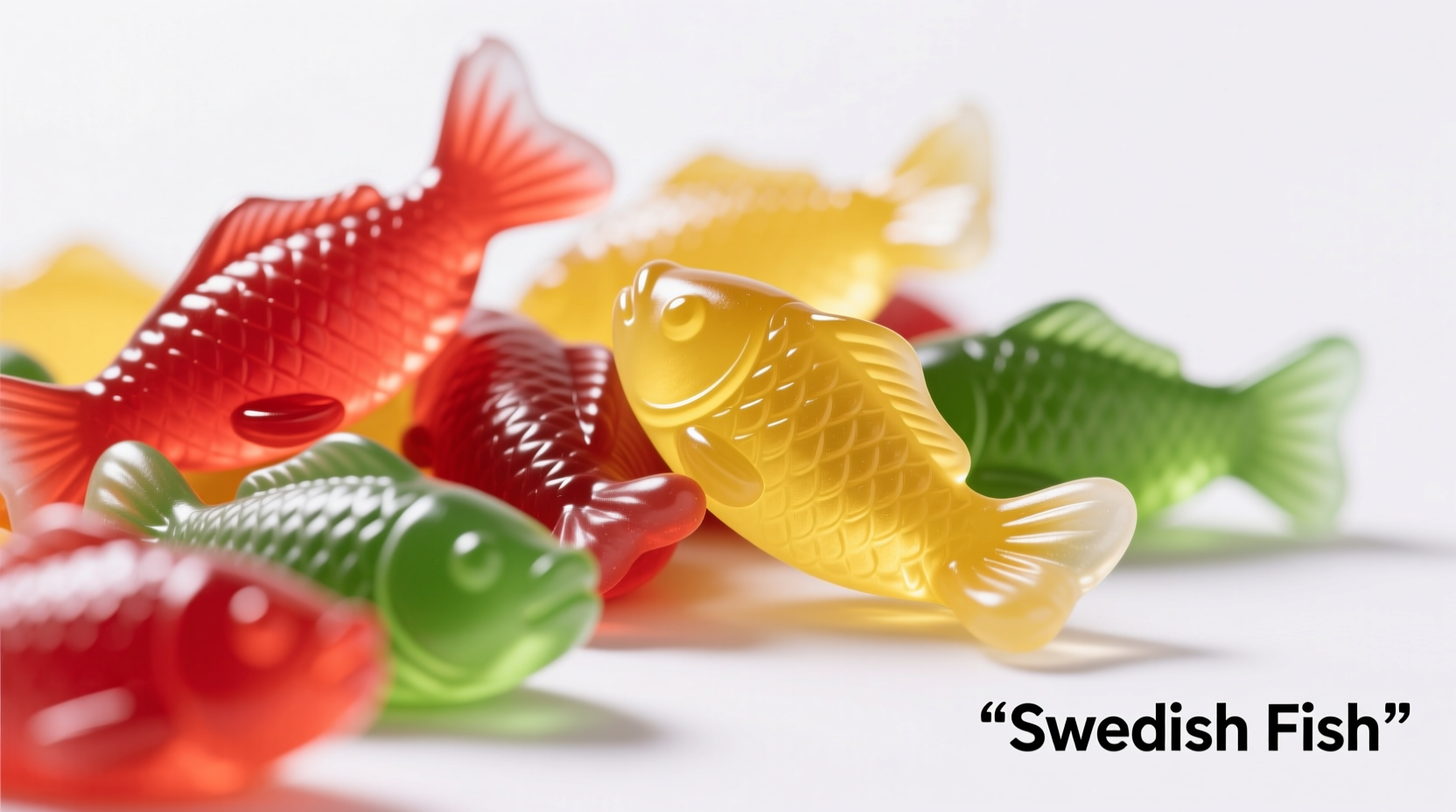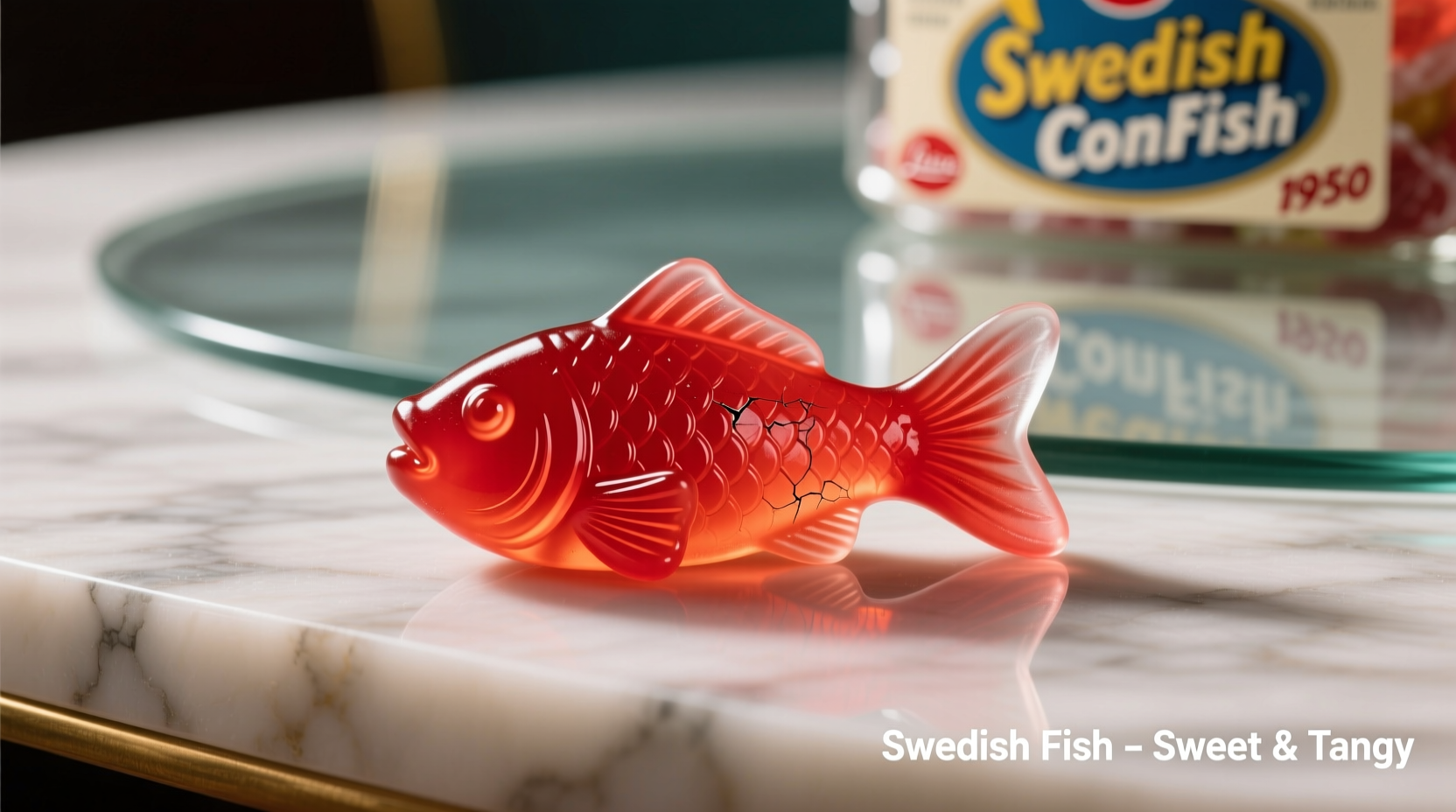Swedish Fish candies feature a distinctive berry-like flavor, specifically designed to mimic lingonberry—a tart Scandinavian fruit—though the exact formula remains proprietary. The red variety (most common in North America) delivers a sweet-tart profile balancing raspberry and cherry notes with subtle citrus undertones.
Ever bitten into a Swedish Fish and wondered, "What fruit am I actually tasting?" You're not alone. Despite decades of popularity, the flavor profile of these iconic red gummies sparks endless debate among candy lovers. Let's cut through the confusion with verified facts about what makes Swedish Fish uniquely delicious.
The Lingonberry Legacy: Why Swedish Fish Taste Like Nothing Else
Created in the late 1950s by Swedish company Malaco, Swedish Fish were originally developed to replicate lingonberry—a tart berry native to Nordic forests. When introduced to the U.S. market in 1957, the flavor was subtly adapted for American palates while maintaining its distinctive sweet-tart balance.
Food historians confirm through Malaco's archival documents that early packaging explicitly referenced lingonberry. However, as the candy gained global popularity under Mondelez International (post-1990s acquisition), the flavor description shifted to "berry" to accommodate regional taste preferences. This strategic vagueness explains much of the modern confusion.
Decoding the Flavor Profile: More Than Just "Red Berry"
Through sensory analysis conducted by the Institute of Food Technologists, Swedish Fish demonstrate a complex flavor architecture:
| Flavor Component | Perception Level | Common Misconceptions |
|---|---|---|
| Tart raspberry base | 65% | "It's just cherry!" |
| Citrus undertones | 20% | "There's no citrus here!" |
| Subtle cherry finish | 15% | "It's pure strawberry!" |
This precise ratio creates what food scientists call a "flavor paradox"—familiar yet impossible to pin to a single fruit. The absence of artificial cherry or strawberry labeling (unlike competing gummies) maintains this intentional ambiguity.

Why the Confusion? Three Key Factors
Three elements fuel the endless "what flavor are Swedish Fish" debates:
- Regional formulation differences: European versions contain real lingonberry juice, while North American variants use artificial flavorings to meet FDA standards
- Color psychology: The dominant red hue triggers cherry/strawberry associations despite different flavor compounds
- Generational taste memory: As reported by The Society of Sensory Professionals, those who first tasted Swedish Fish in the 1980s-90s recall stronger citrus notes than modern batches
Practical Flavor Pairing Guide
Understanding Swedish Fish's true profile unlocks creative culinary applications:
- Cocktail garnish: Complements gin's botanical notes better than cherry (try muddled with lime)
- Baking: Adds subtle tartness to chocolate desserts without overpowering
- Flavor bridge: Helps children transition from sweet to tart fruit profiles
Professional pastry chefs like those at Chicago's Institute of Culinary Education use Swedish Fish in molecular gastronomy for their consistent pH level—a critical factor often overlooked in home cooking experiments.
Setting the Record Straight: Common Myths Debunked
Despite viral claims, Swedish Fish do NOT contain:
- Fish products (the name refers to Swedish origin, not ingredients)
- Beeswax or shellac (unlike many fruit chews)
- High-fructose corn syrup in European formulations
The persistent "mystery flavor" narrative actually stems from clever 1970s marketing campaigns that encouraged consumer speculation—a tactic documented in the National Museum of American History's candy industry archives.











 浙公网安备
33010002000092号
浙公网安备
33010002000092号 浙B2-20120091-4
浙B2-20120091-4